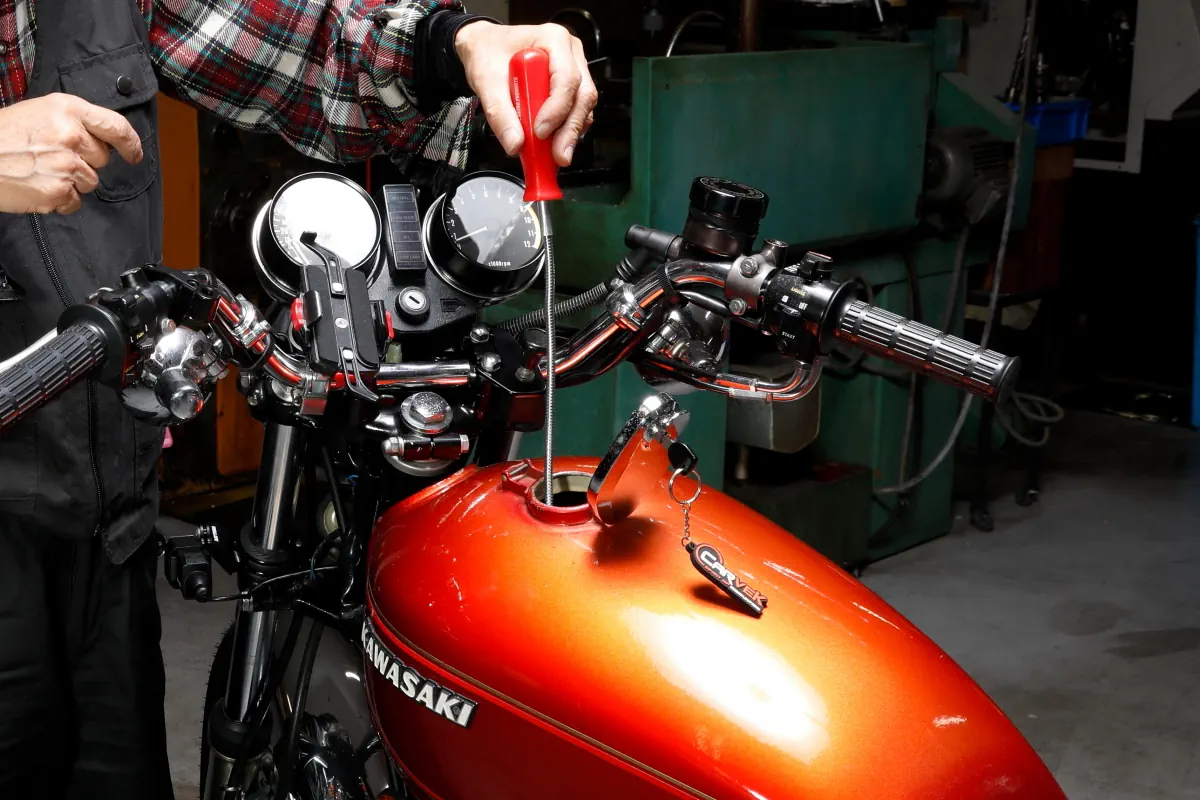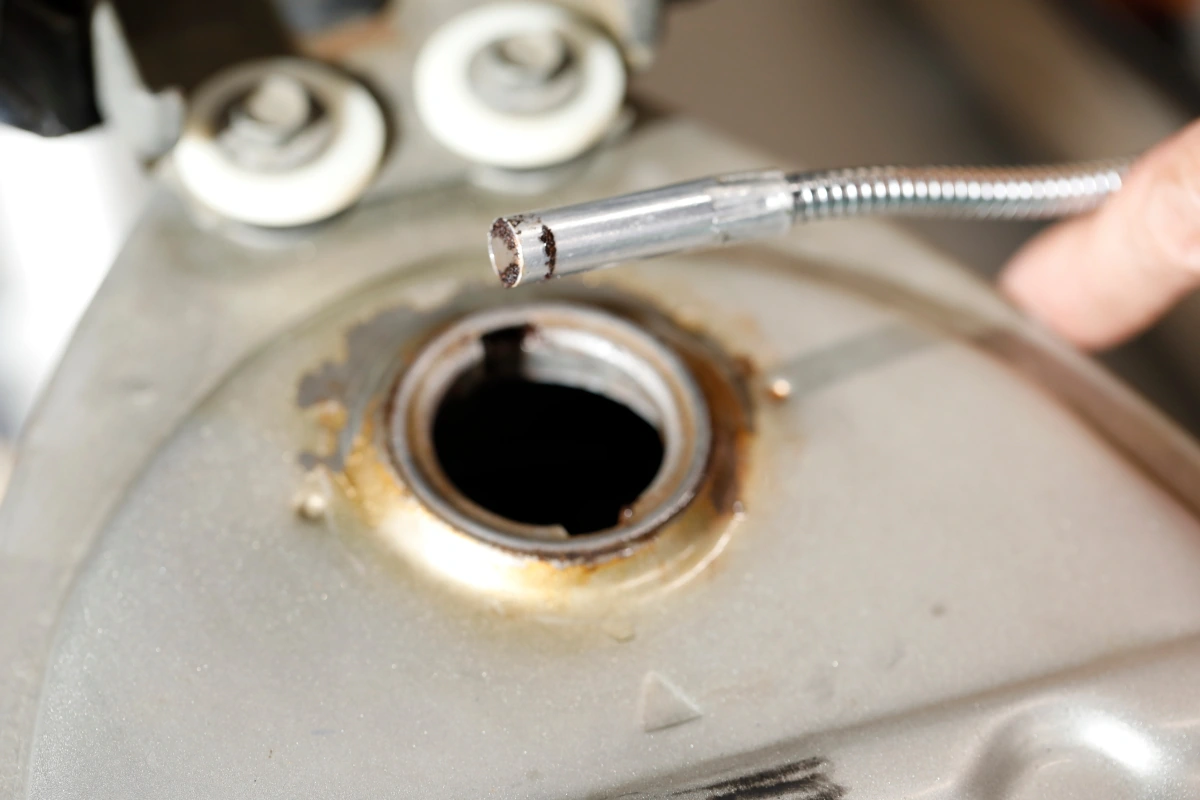Older motorcycles, discontinued, and motorcycles that have been neglected for a long time more or less face the problem of rust in the fuel tank.
Currently, mainstream neutral rust-removing chemicals are easy to handle because they can be rinsed off with tap water, but have you ever wondered if all the rust inside has really been expelled by simply spraying water from a hose vigorously?
In such cases, a magnetic pickup tool or vacuum cleaner can be useful as a confirmation tool.
- Rust in the fuel tank is a problem for both carburetor and injection vehicles.
- Put a magnet in the tank and you can easily see the situation inside the tank before rust removal.
Rust in the fuel tank is a problem for both carburetor and injection vehicles.


Observing the inside of a fuel tank with a fiber scope requires preparation such as draining the fuel, but a pickup tool can be used with the fuel still in the tank. Even if there is no rust in the visible area inside the tank, if the carb overflows due to a clogged float valve, scraping the bottom of the tank with a magnetic pickup tool may reveal the situation.
The performance of fuel tanks against rust has been steadily improving due to the improved performance of the rust-preventive steel plate used as the material. However, fuel tanks on sports models often have exposed caps, and when stored in the open or driven in the rain, water accumulates around the caps and enters the tank, causing rust.
It is also said that changes in the composition of the fuel itself have made it more susceptible to rusting during long-term storage than in the past. Rust in the fuel tank not only deteriorates the tank itself but can also cause carburetor problems. Rust in the tank is supposed to be caught by the strainer of the fuel cock or the filter in the fuel joint of the carburetor body, but such a catching function itself may not be functioning due to age-related deterioration, or may not be equipped if the car is older. If rust that has peeled off for such reasons flows into the carburetor and gets trapped between the float valve and valve seat at the entrance to the float chamber, the valve will not close even if the float oil level rises, causing an overflow.
Rust in the tank can be troublesome, and the same is true for injected vehicles. Injection vehicles have a fuel pump inside the tank (some models have a fuel pump outside the tank) that pressurizes the fuel sucked up and sends it to the injectors. There is a large filter at the entrance (suction port) of the pump, but if rust or dirt adheres to this filter, it not only causes a decrease in fuel flow but also increases the load on the pump motor as it tries to suck up fuel that cannot be sucked. To avoid such problems, it is effective to detect the signs of rust before it covers the entire inside of the tank and deal with it as soon as possible.
Put a magnet in the tank and you can easily see the situation inside the tank before rust removal.


Even tanks that appear to be rust-free at first glance may have foreign matter adhering to them when magnets are inserted and rustled around.
If you own a fiberscope, you may be able to see rust in places that cannot be seen through the tank cap area as an image.
However, it may be necessary to empty the tank to check with a fiberscope.
For this kind of work, a pick-up tool with a magnet on the end is useful.
There are two types of pick-up tools for collecting bolts, nuts, and parts that have fallen into places that radio pliers and fingers cannot reach: a reach claw type, like a UFO catcher crane, and a magnet type.
If you shove fuel in the tank while it is still in the tank, it will not damage the pickup tool. If it is already rusted, it may be possible to correctly assess the situation by inserting a magnet while rust is settling at the bottom, rather than removing it from the vehicle body and swinging it around in all directions to remove the fuel.
Rust tends to accumulate in the tank at the welds between the sides and bottom, and at the rear end where the bottom is low. Insert the pick-up tool through the cap and slide it around to see how much rust has accumulated, while checking the magnet from the outside. If the bike has been ridden for a number of years, it is not unusual for iron-based debris to come up on the magnet, regardless of the presence or absence of rust.
However, if red rust is still attached to the bike no matter how many times you rub it, you should assume that there is a reasonable amount of rust and perform the rust removal operation.